Dual Raytheon Directly Heated Sound – iBasso Nunchaku Tube DAC / Headphone Amplifier
iBasso Nunchaku is a $299 USD Dongle With Dual tubes, based on Dual Raytheon JN6418 tubes with a 22.5V Anode Power Supply, and a Tube and Class AB Output modes. Today we will review the Nunchaku and also compare them with other high-end dongle and portable DAC AMPs including FiiO BTR17 (199 USD), KAEI TAP-1 DACs (329 USD), and FiiO Q15 (399 USD).
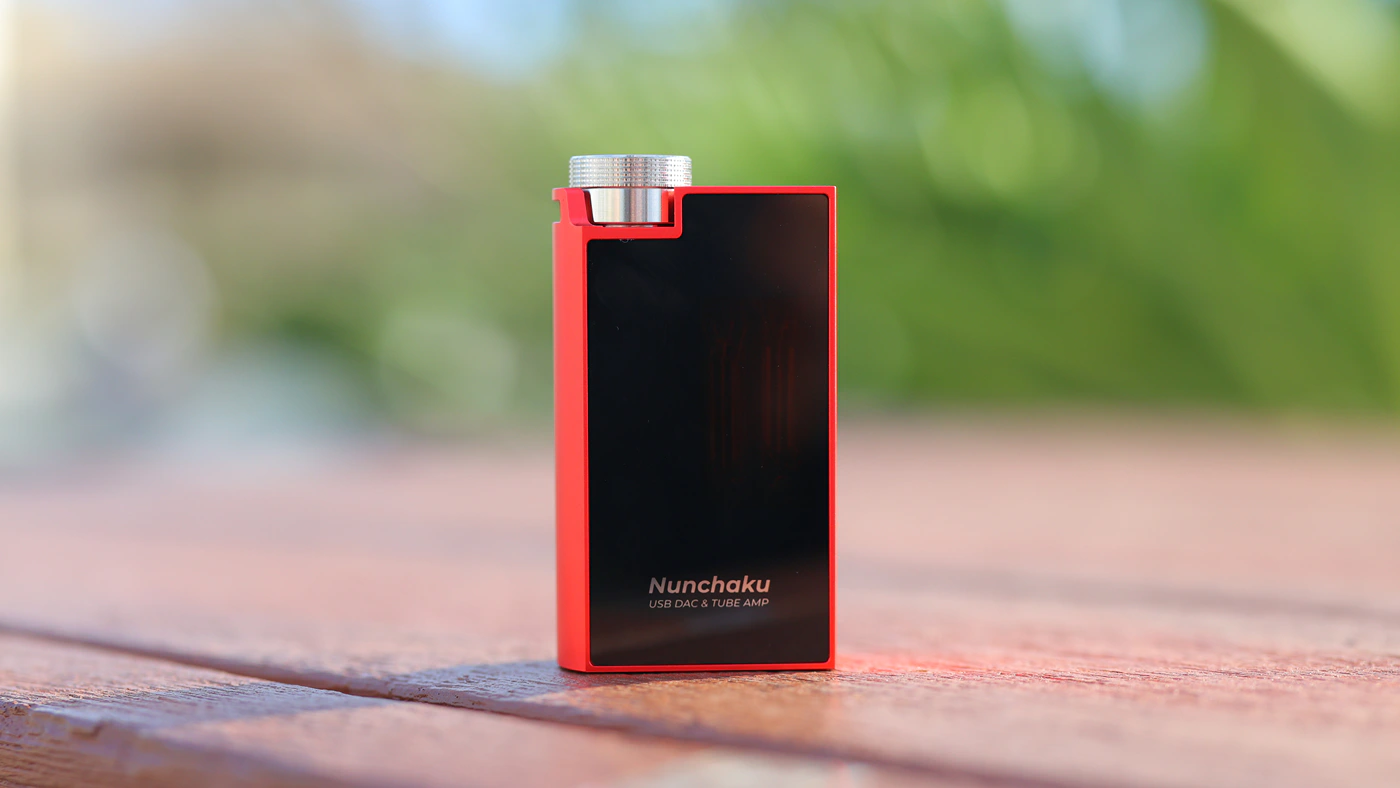
Introduction
iBasso is a backbone in the audio industry and they’ve been for a long time one of the most popular companies for sources, including DAPs and DAC/AMPs. They usually have a higher sound quality than the competition, and they’re the only audiophile manufacturer that takes reliability and sustainability into account, creating easy to repair DAPs for which you can easily replace the battery, upgrade the Amplification part, and just generally fix yourself, while also offering some of the best warranty available in the whole world.

As an Amazon Influencer, I earn from qualifying purchases, and using the purchase links in my reviews helps me maintain this website and Youtube Channel. Huge thanks to iBasso for providing us with the sample for this review.
Product Link
Amazon – https://amzn.to/4ht7HJW
Aliexpress – https://s.click.aliexpress.com/e/_okLzggt
Build Quality/Aesthetics
iBasso Nunchaku has a fun name, but it is not necessarily characteristic for the device we’re seeing, and it is physically a very robust, and simple DAC AMP with a volume wheel that is clicky, one USB Type-C input and two headphone outputs, one in the 4.4mm balanced format, and one in the 3.5mm single ended format.
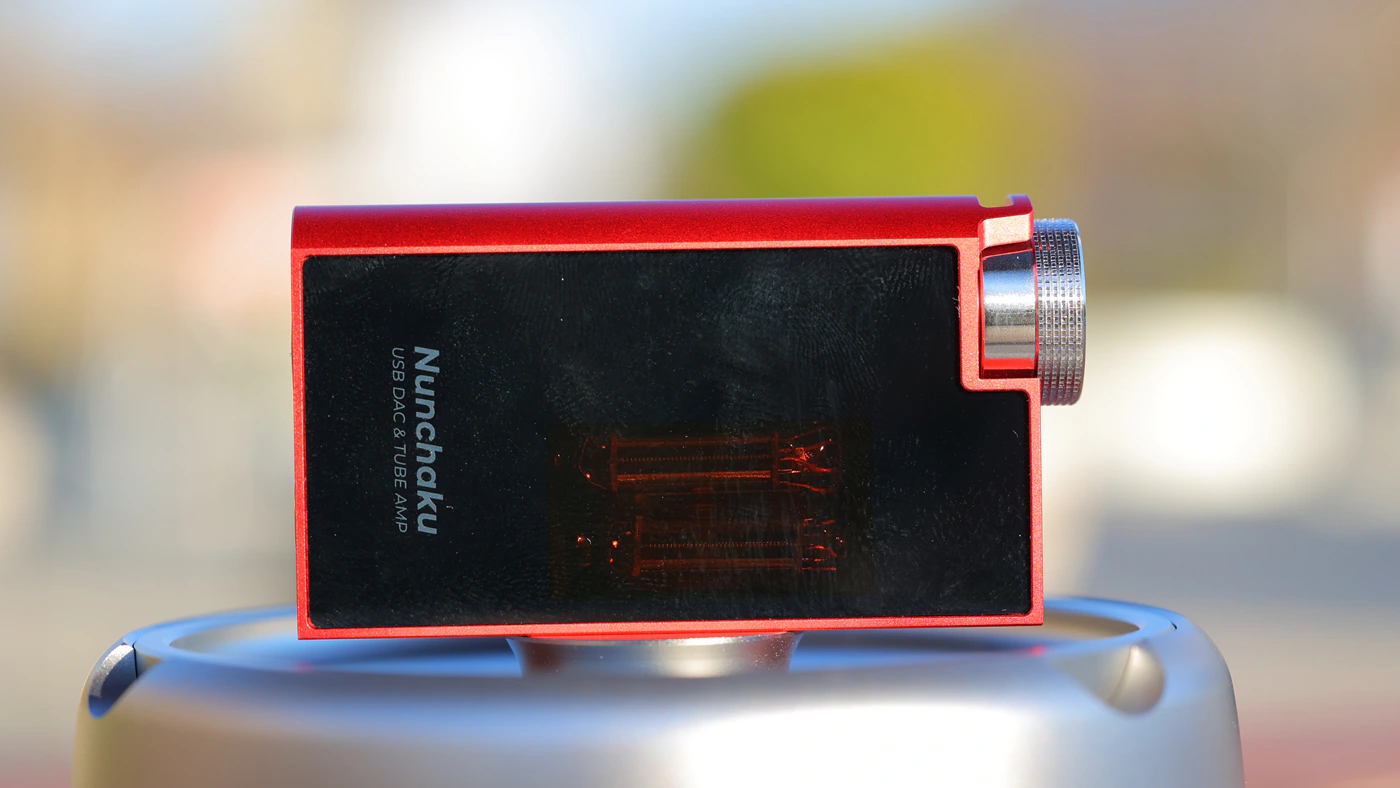
The inner construction of the Nunchaku is impressive as we’re seeing a Ti Dual OP-AMP x 4 and a BUF634A x 4 setup inside. This all leads to a total Output Power of 525 mW + 525 mW, and a power consumption of 120 mA / 5V. The AMP is powered by a pair of Dual CS43198 DAC Chipsets, and Nunchaku features a 0.96 OLED Difsplay along a Multi Function Volume Wheel.

Just like most recent iBasso products, Nunchaku features an In-House Developed FPGA Chip, and a Hardware Volume Control from JRC. There is an Android APK app to further customise the Nunchaku, and those Dual Raytheon KAN6418 tubes are directly heated Vacuum Tubes, renowned for their compact size, low power consumption while iBasso has implemented a high voltage, 22.5V Ande Supply designed for those tubes.
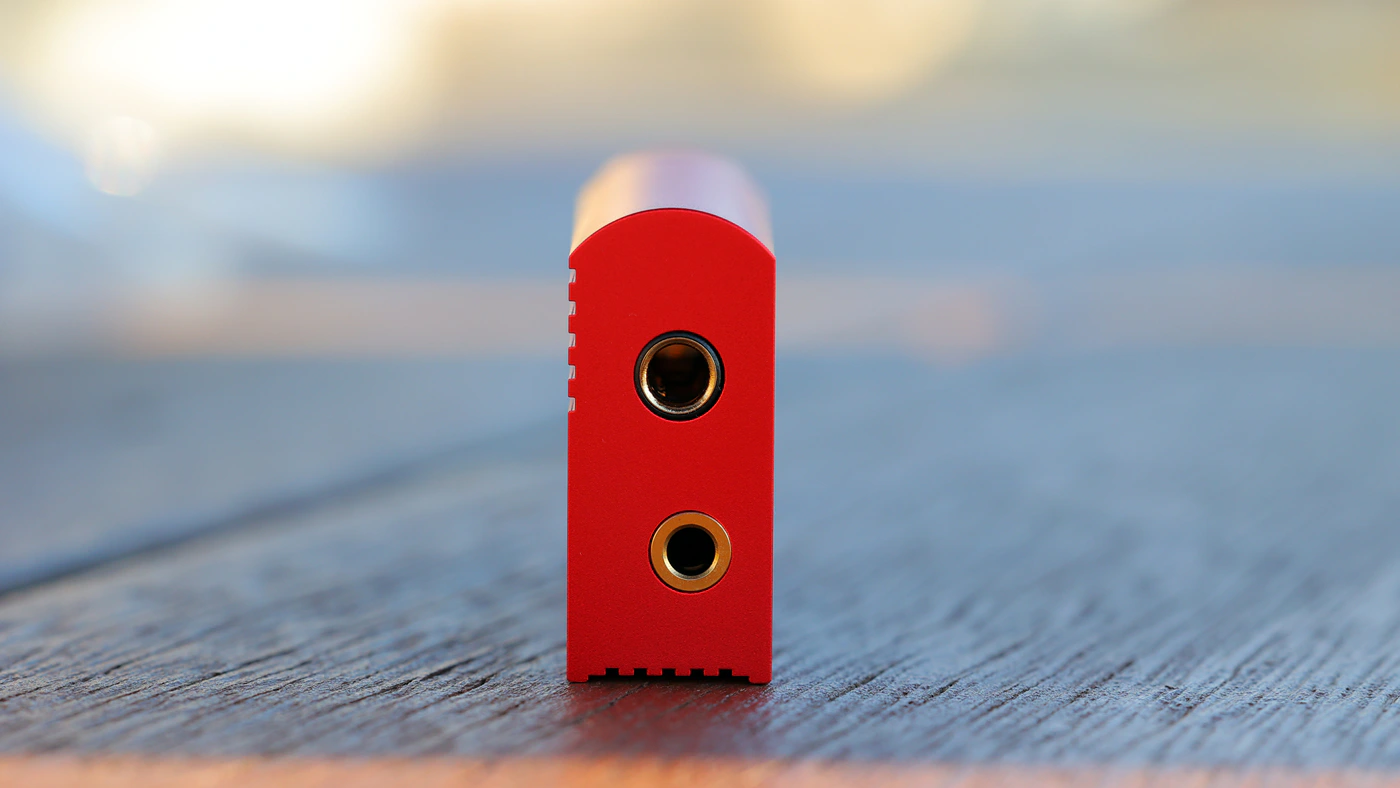
To make sure that Nunchaku won’t just burn out eventually, as those tubes can have a limited lifetime, Nunchaku also has a Class AB output mode, and you can switch between the Tube Mode, which is promised to sound sweeter, warmer and thicker, and the AB mode which is promised to sound more precise, and have a higher transparency. There is no USB DAC delay, and Nunchaku works exactly as intended, allowing you to set up everything from its own menu with no need to actually install any other app. The volume wheel controls the internal volume of the Nunchaku and you you can leave the digital volume of your smartphone at maximum.
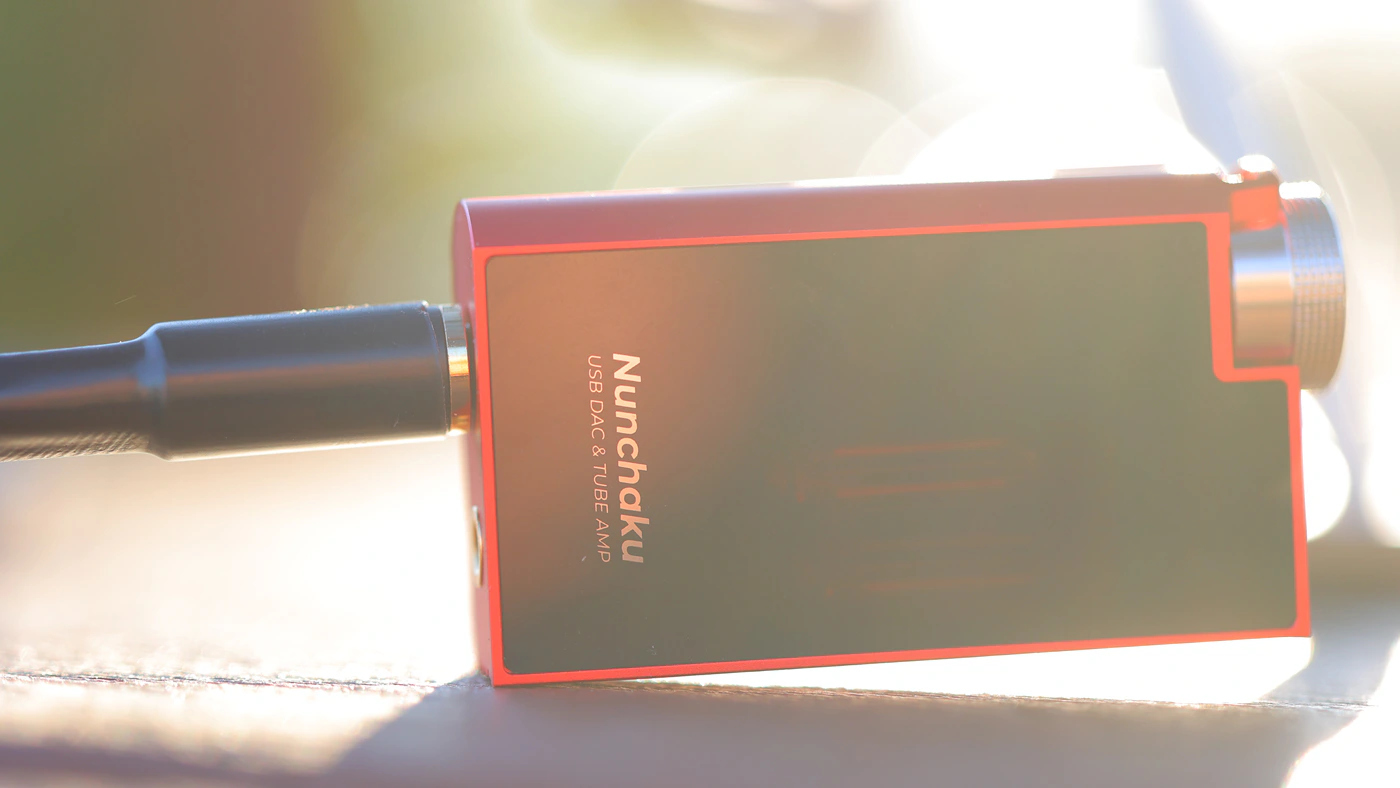
It is mentioned in the product page of the Nunchaku that it can have a slight microphonic effect when using Tube Mode. This means that if you tap on the device, you can hear a ringing sound, which is normal. Nunchaku consumes less power from your phone in Class AB mode than it consumes in Tube Mode, and it is rather power efficient for the 525mW of power per channel it can output. The handling and microphonic noise of the tubes is dampened using a PORON Material to suspend the tubes, attaining effective shock and reducing the microphonic effect.
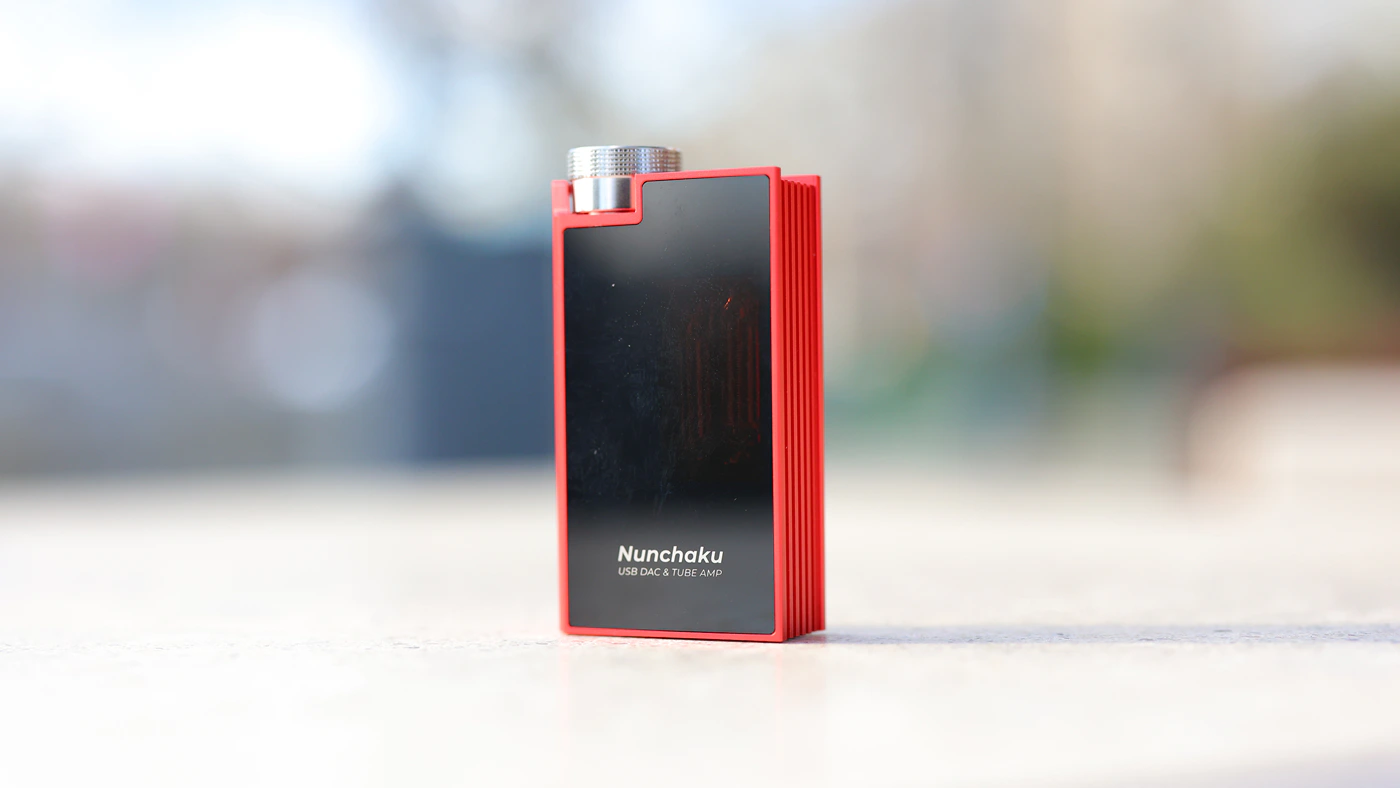
iBasso uses an APX555 to match the tubes by running a SINAD Pairing between them, and this means that the company has a rather limited production capacity of just 50 tube pairings per day, or 50 Nunchaku units per day. Inside the package you can find the iBasso Nunchaku unit, two usb cables, one type-c to type-c and one lightning to type-C, a uSB type-A adapter, and a little protection jacket.
Sound Quality
Pairings and Match-up – To test the new iBasso Nunchaku DAC AMP, I have paired it with both IEMs and Full-Sized Headphones, and for the IEM list I have used Tin HIFI P1 MAx II, Campfire Moon Rover, Simgot EM10, HarmonicDyne Devil, HeartField Blanc, and Soundz Flame. The headphone list includes Palma DHS-1, MIRPH-1, Audeze MM-100, Erzetich Mania V2024, Ecoute TH1, Crosszone CZ-8a Enhanced. The maximum driving power, especially from the balanced output is plenty for full-sized headphones, although I would stay within easier to drive options like iBasso SR2 and SR3 rather than go for planars like the HIFIMAN He1000 series. For IEMs, you will hear a background hiss and noise floor, and you will hear the tube Ping and microphonic noise every time you’re listening using the Tube Mode, but the effect is so quiet and the background hissing / noise level is so low, that if any music is playing, even at volume 1, you will not notice those the noise floor nor the tube ping / handling noise.

Overall Signature – Although iBasso markets that Nunchaku has two sonic modes, both sound fairly similar, warm, thick, smooth and dynamic, with a high level of details, although there’s more information and resolution to be heard in the Class AB mode, while Tube mode sounds analog, with a warmer, thicker signature, more tube characteristic distortion, a higher level of dynamics and a more romantic and engaging sound. iBasso Nunchaku is also not one bit sensitive to handling and ping noise compared to all of the other tube tech I’ve reviewed, and basically even if tapping with my nail or another metallic object on the case of the Nunchaku, I cannot hear the tube handling noise. even tapping on the cable of the IEMs, IEM jack, or even type-C cable allows the Nuchaku to stay silent, which is super pleasing as most tube AMPs tend to have a loud ping microphonic noise when handled.
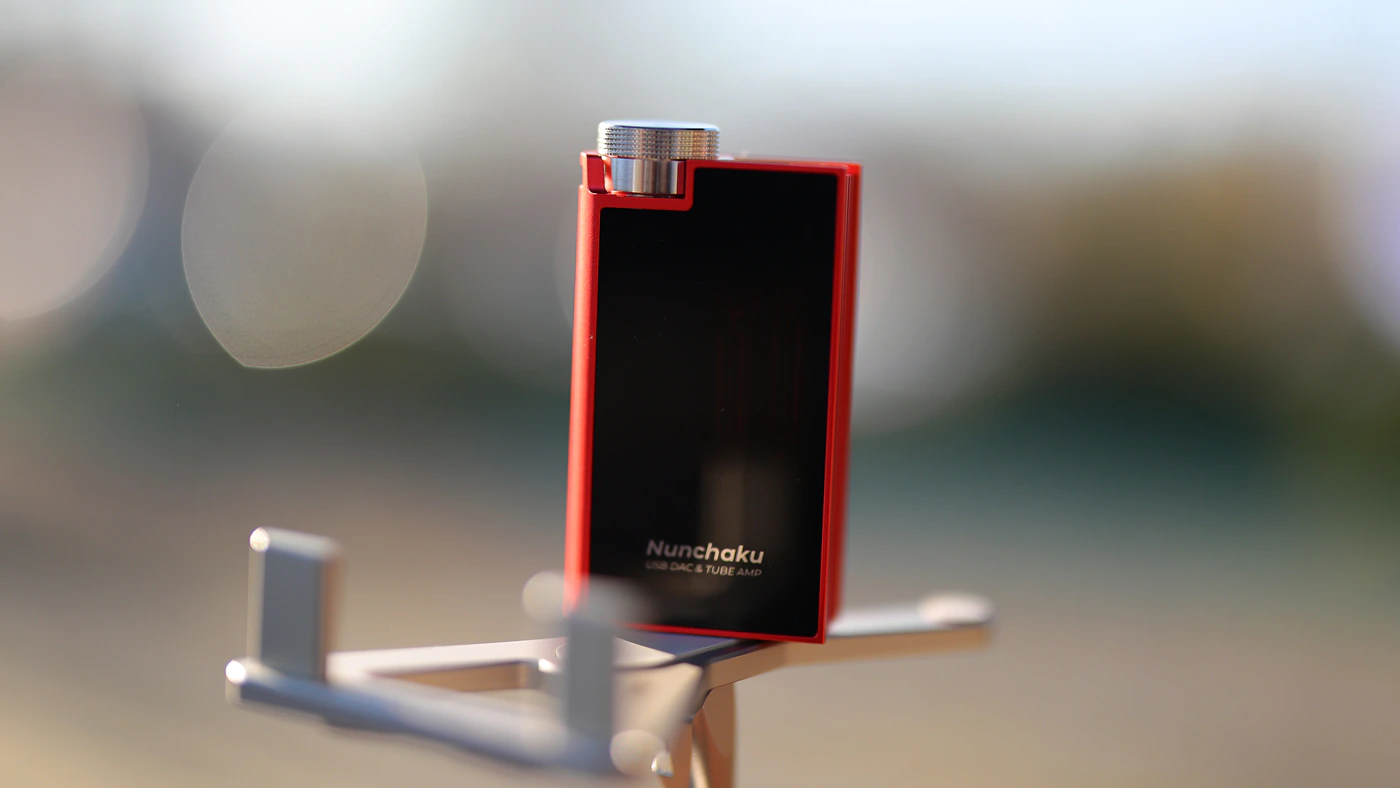
Bass – iBasso Nunchaku has a really strong bass, with a boofy, warm, wooly bass. There’s an extra amount of bass, subbass, mid bass and even the upper bass has a bit of extra quantity and impact. This results in a sweet, romantic and analog sounding tuning in the lows. The tube characteristic added texture and distortion is audible down to the lowest frequencies, and this sounds full, filling in the entire space Nunchaku has to offer.
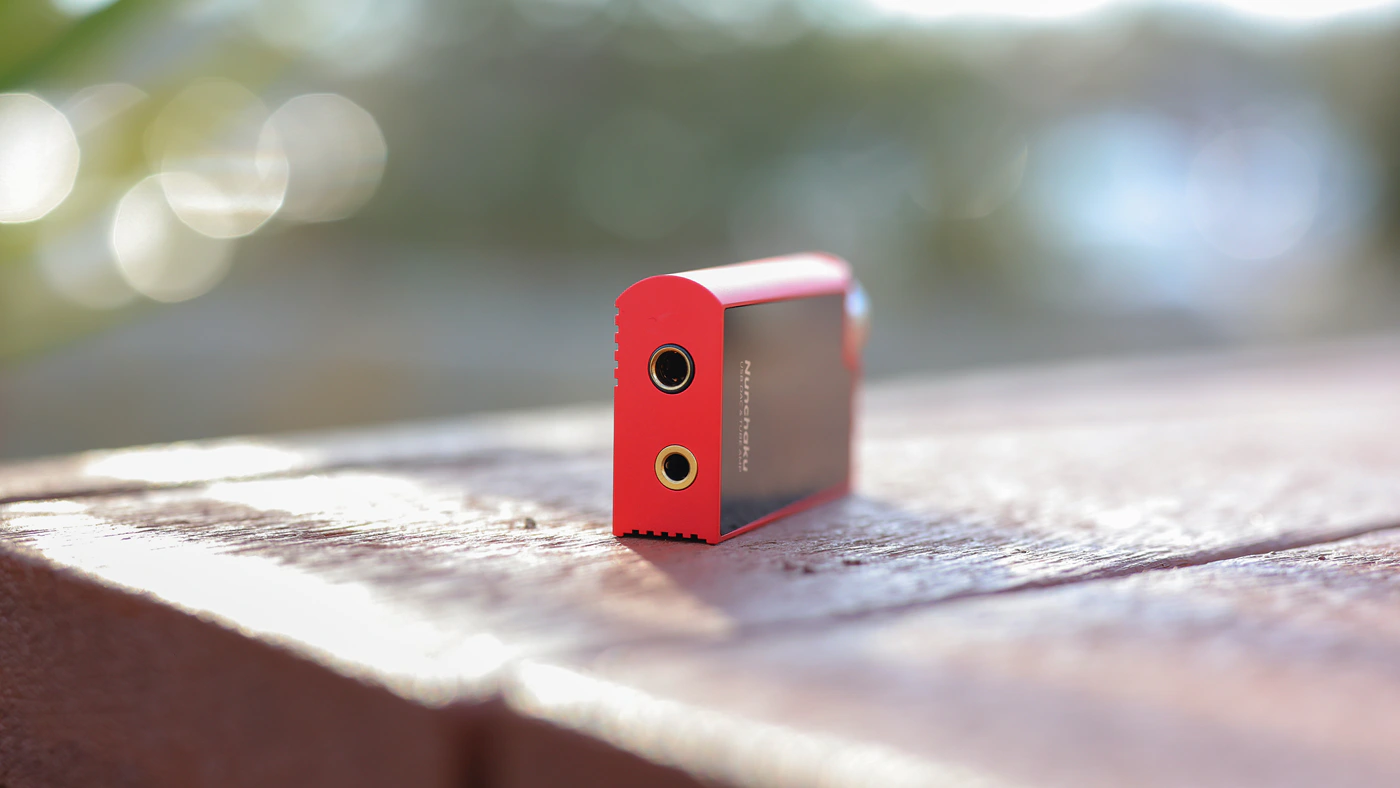
Midrange – We get a really warm, musical and full sounding midrange. There’s the added tube character, which presents itself as an added texture, and an added distortion. This character does not feel like an increase in the THD or Total Harmonic Distortion, but rather as an added weight and body to the sound, and an organic sound. iBasso Nunchaku feels like the sound is coming from a live instrument more than a recording, giving a special kind of life to music, sounding vivid, and dynamic / engaging. The effect of the tubes is especially audible with classical music, even music that has only part acoustic instruments, like symphonic metal, where Nunchaku’s rendering of instruments really shines.

Treble – We get a smooth treble, with less energy than the midrange and the bass. This allows voices to feel forward and intimate, while cymbal crashes and special effects are recessed, being played in a less forward plane. Bass almost always takes a central spot in the song, sounding bold, full, lush and having a strong and powerful kick. There’s a certain level of power to the whole sound, and the treble presence is just enough to contrast the bass and keep the whole sound in balance.
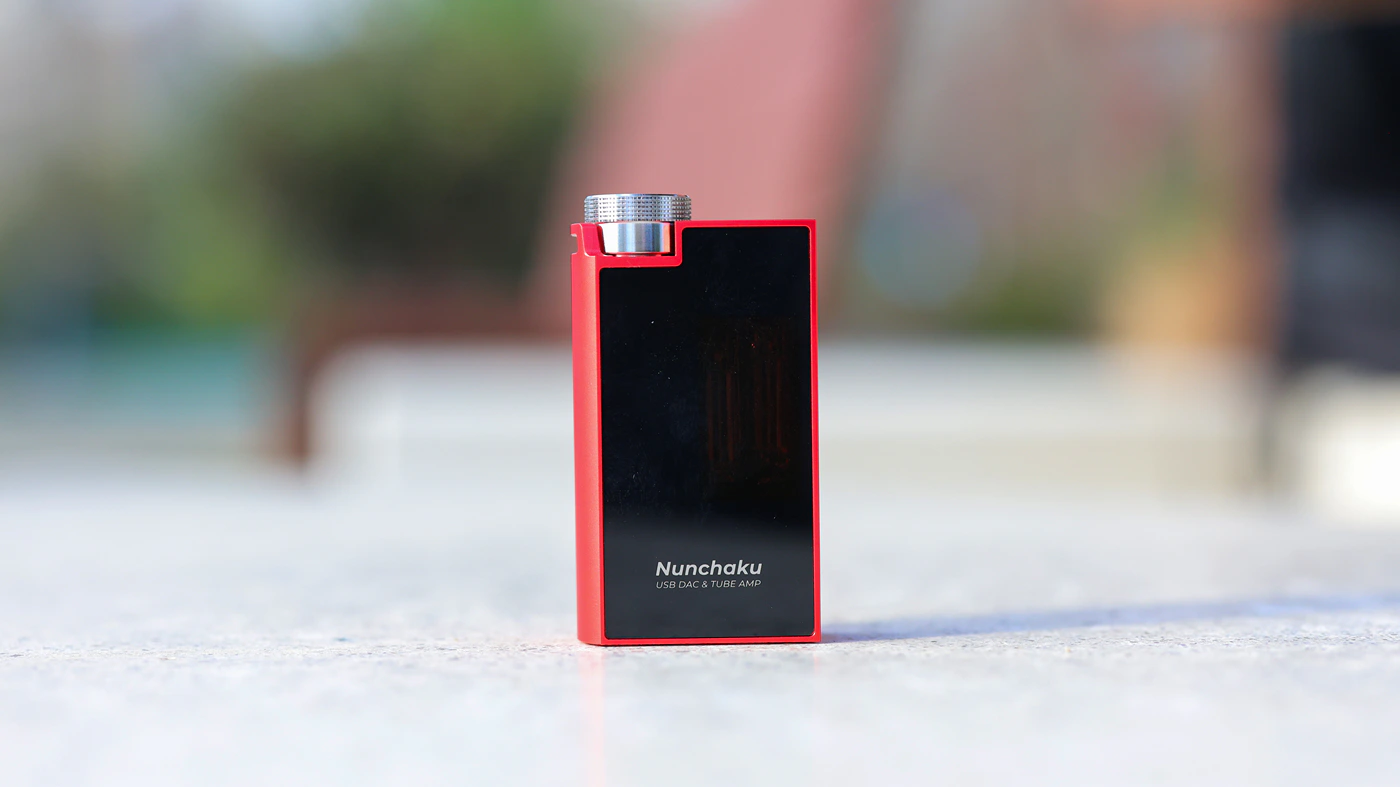
Dynamics / PRaT / Textures – We have a strong, contrasty and dynamic sound. The texture is very different when changing between the Tube mode and the Class AB Solid State Mode. This is because the tube mode audibly adds more texture, a grungy and sandy texture that gives all music an analogic and organic presentation. Class AB Solid State mode sounds much cleaner, with less texture, but it also sounds colder and more shrill compared to the obviously warm tube mode.
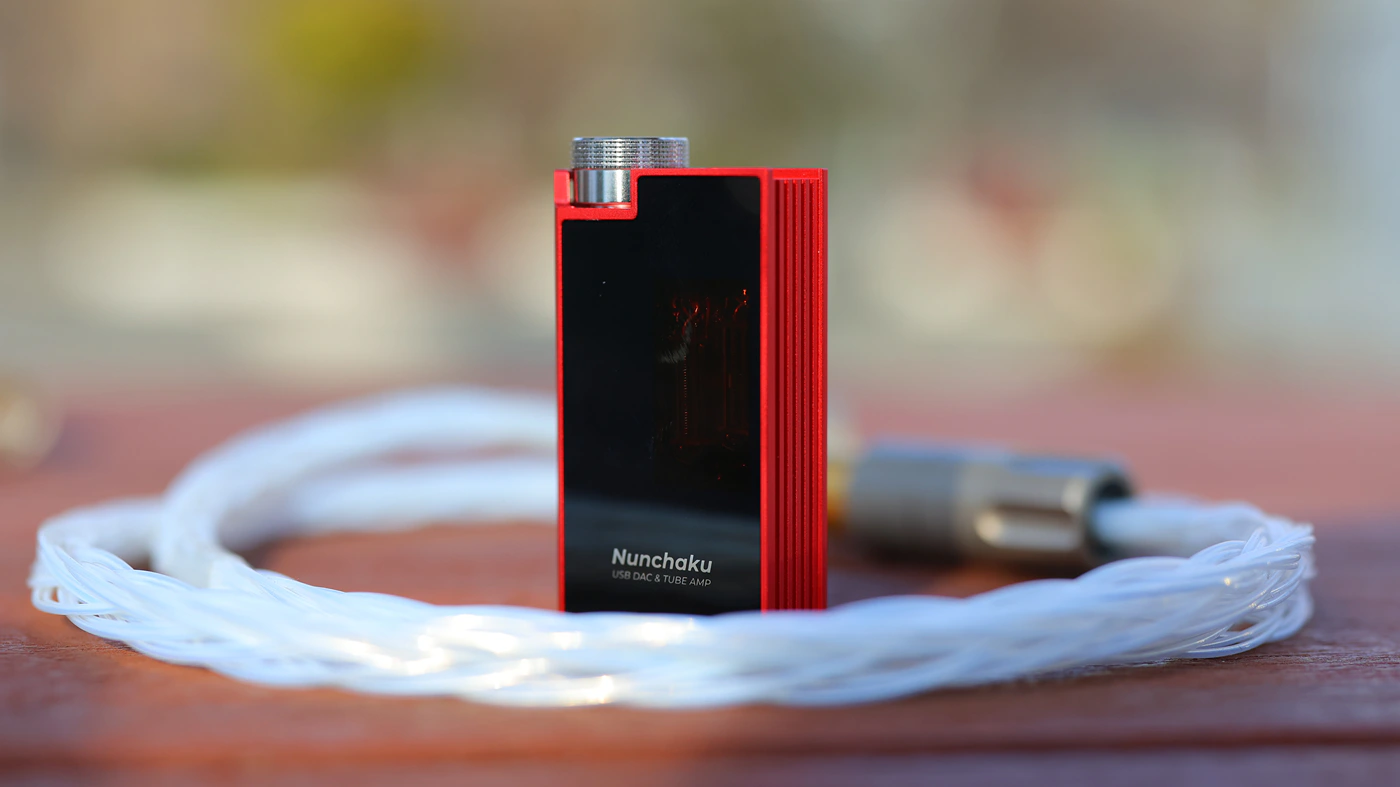
Loudness Saturation Gradient – iBasso Nunchaku sounds fairly linear and you get the same sound when using the SS mode, but in the tube mode, it sounds better the louder you go. This is generally true with Tubes, as it enhances the tube effect, increases the dynamic effect and also gives music a powerful and vivid presentation.
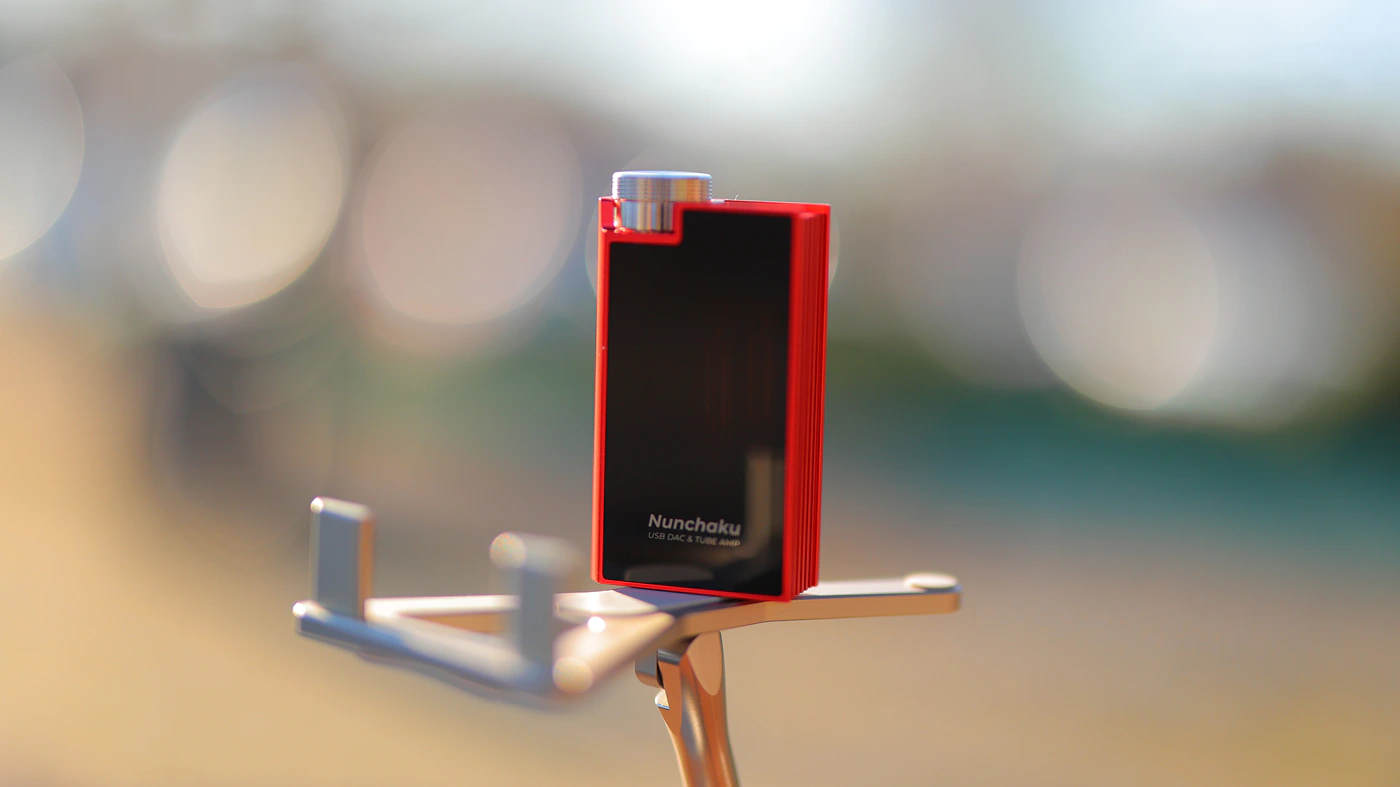
Soundstage – I hear music in a holographic way, but with an intimate voicing. Nunchaku can project music really well in the lateral plane, but it always seems to bring the voice and lead instrument in an intimate space to the listener. This helps music stay vivid, engaging and direct, raw, even when it extends in the 3D plane. Quite a unique presentation.
Comparisons
iBasso Nunchaku vs FiiO Q15 (299 USD vs 399 USD) – FiiO Q15 costs more, it is larger, and takes much more space, but has its own battery, and will not draw much from your phone. This being said, it is hard to transport, and I consider it to be a bit too large to be portable, and more of a transportable DAC AMP, although I personally would buy a Nunchaku for a PC more, as I don’t like putting strain on the Type-C connector of my phone, and I did damage one on my S23 ultra. Sonically, Nunchaku has a more analogue, warmer, more magical sound with better impact, deeper bass, a smoother treble, and Q15 sounds downright cold, bright and analytical in comparison. There’s a certain warmth and organic tonality in the Nunchaku that makes it interesting and worthy of your ear time, but it has a higher noise floor with IEMs and also a lower driving power than Q15, so if you’re using either extremes, very easy or very hard to drive headphones, you’ll likely want Q15. This being said, I really like the tuning of the Nunchaku, especially for classical, and for music that was acoustic at some point. EDM and Dubstep are not generally advantaged by tube tech, but most music that was recorded from an analog source always is.
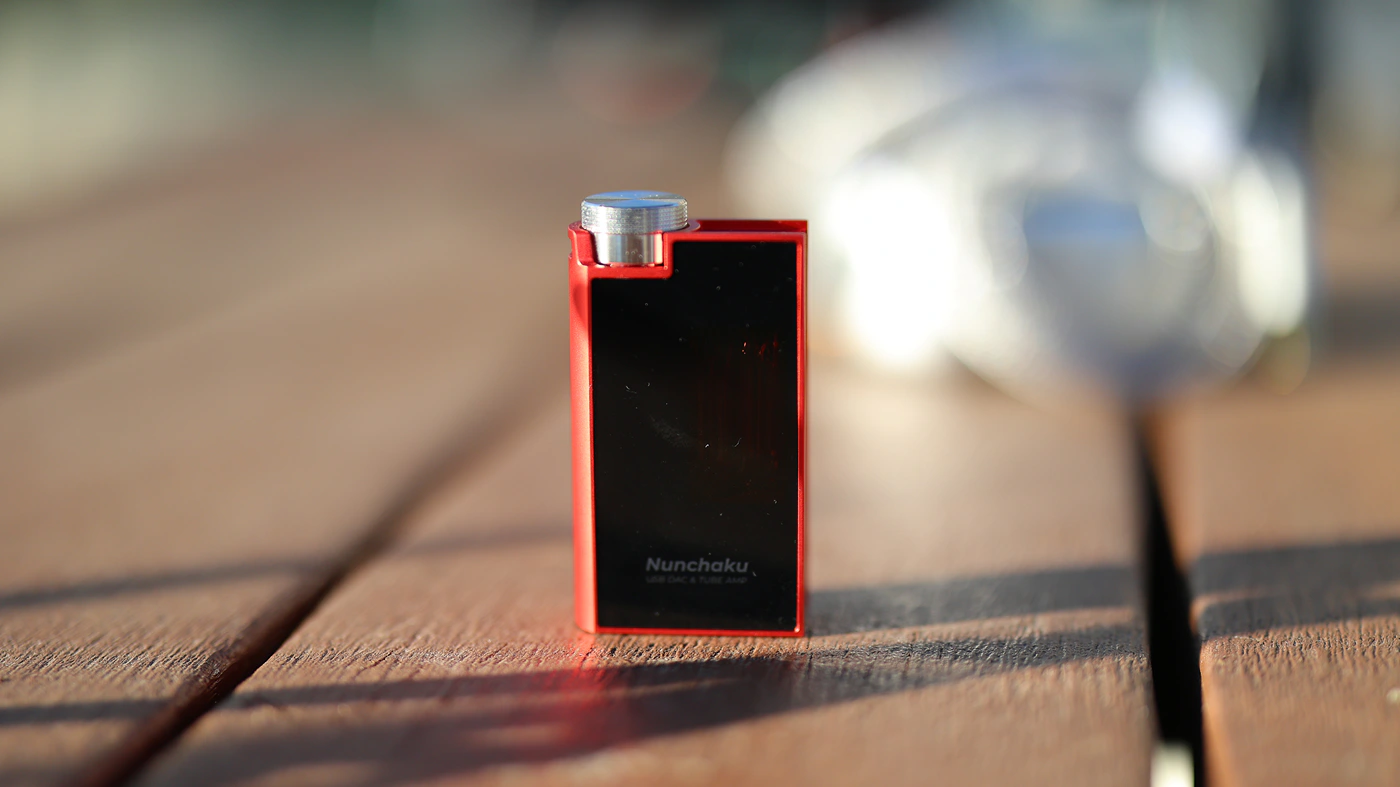
iBasso Nunchaku vs KAEI TAP-1 DACs (299 USD vs 329 USD) – KAEI TAP-1 DACs is basically the only alternative that I know of right now which uses a similar tube, but it has pretty audible microphonic noise and handling noise, while Nunchaku is free of those. There’s a big difference in the build quality, Nunchaku is a very put together product that is final, while TAP-1 DACs is a product that feels more experimental, has a bit of wiggle space everywhere, although it does work as intended. Both have no USB DAC delay, but sonically, TAP-1 DACs is more similar to a Feliks Echo, it is bright, clean, neutral and sharp, with a very good resolution and clarity, while Nunchaku has a more traditional sound for a tube based DAC AMP, with a warm, thick and lush sound, audible tube character and analog signature. Nunchaku also has the wider soundstage, more impactful bass, less distortion in general, and it is more portable being easier to recommend. KAEI TAP-1 DACs has a higher noise floor for IEMS and it generally struggles more to drive hard to drive headphones, but it does have an analogic volume wheel and it feels more vintage while in use.
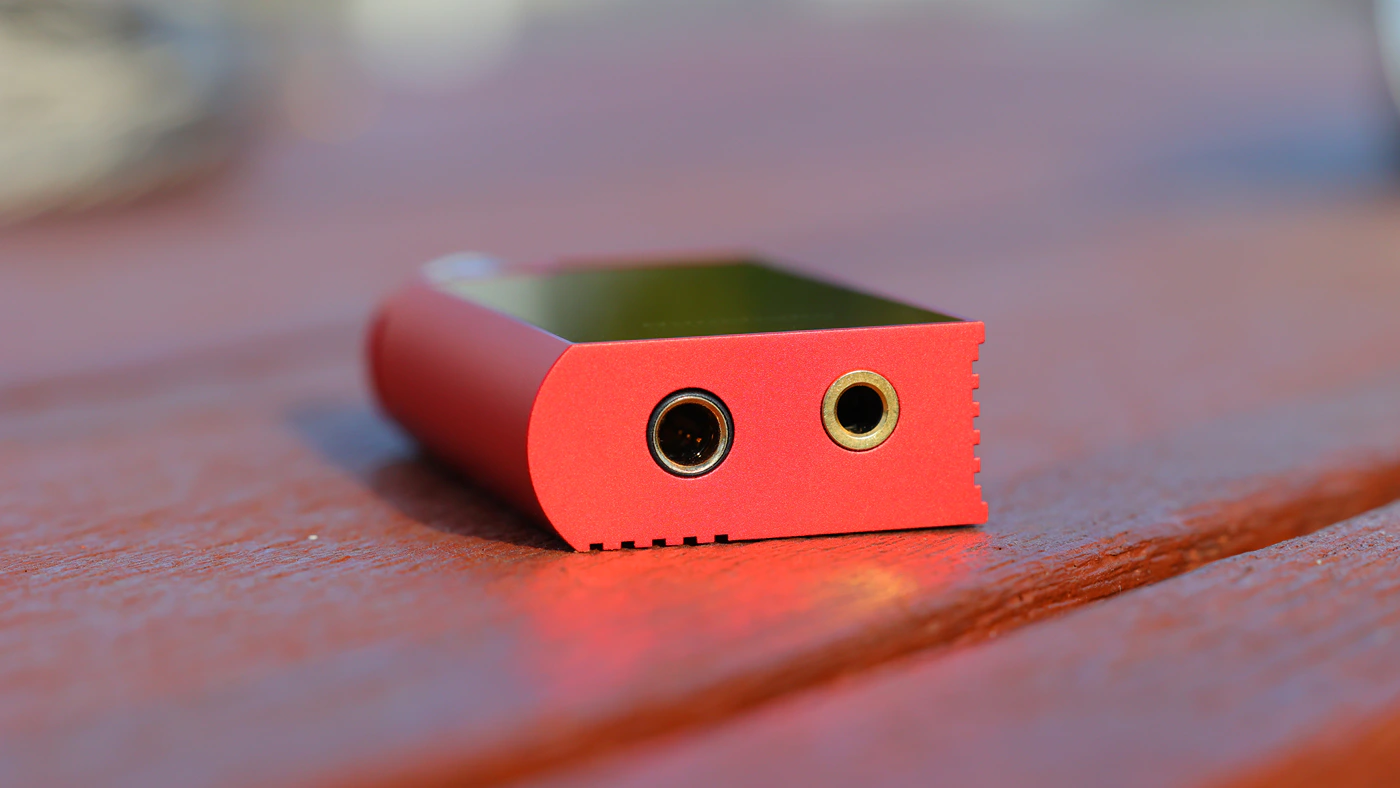
iBasso Nunchaku vs FiiO BTR17 (299 USD vs 199 USD) – I got this question quite a lot, but why would someone purchase Nunchaku when BTR17 has a similar level of driving power, a good detail and also has excellent bluetooth support. I found it hard to answer the question right away, but exploring each product, Nunchaku focuses more on pure sonic quality, it has a smaller footprint, but it does not have an internal battery. The tube Mode is something that BTR 17 simply cannot do, and it sounds really lifelike and convincing on Nunchaku, while BTR17 sounds very good for what it is, which is a Bluetooth Receiver / DAC AMP. While both have a good build quality, driving power and low noise, BTR 17 handles very sensitive IEMS with less noise and it is more controlled, while Nunchaku has a higher noise floor for IEMS, but also has a higher maximum driving power and control for hard to drive headphones. Although Nunchaku costs more, it achieves a more unique, analog, warm, thick and lush sound, and I recommend you try it if this all sounds appealing to you, while BTR17 is a reliable choice if you mainly use very sensitive IEMs and need a neutral, colder sounding source.
Value and Conclusion
iBasso managed to create a much more practical dongle DAC AMP than KAEI managed with their TAP-1 DACs, and iBasso did this while keeping the price lower, size lower, offering a much better driving power and control, and better build quality, so relative to other tube based portable DAC AMPs, they are creating a much higher value for their product, and even when comparing the new Nunchaku to other traditional DAC AMPs, not just tube ones, Nunchaku is still excellent, having a nice sonic quality, and low power draw, while looking top.
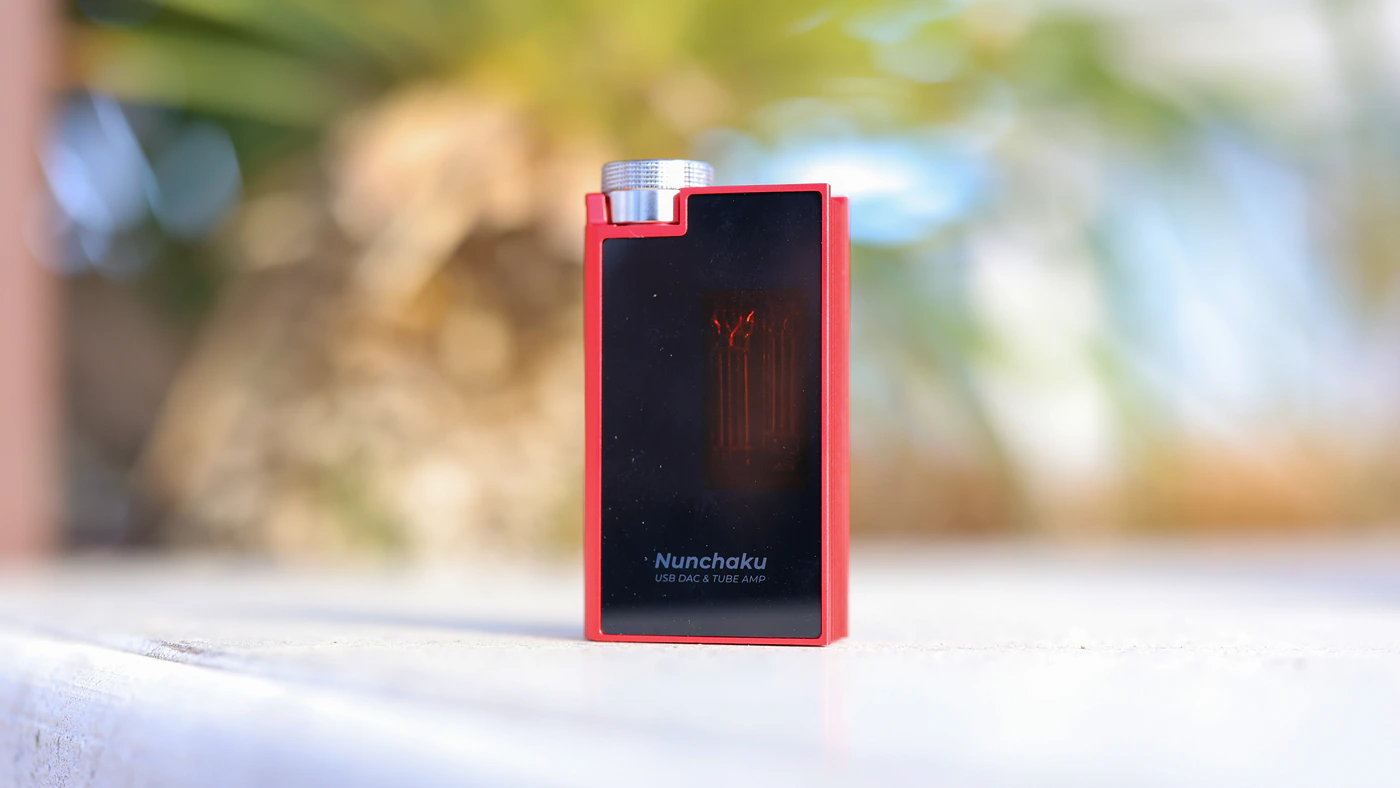
At the end of the day, iBasso Nunchaku is one of the most advanced dongle DAC AMPs that you can purchase today, having a practical design, a warm and thick sound, strong bass, and a strong tube character in a small form factor with very little microphonic and handling noise, perfect for portable usage, and it also has a Class AB mode if you don’t want the tube warm and wooly sound, and being able to turn into a detailed, crisp and precise sounding DAC AMP.
PROs
- Practical, small design
- Small power draw, works well with a smartphone
- High driving power
- Warm thick and strong tube character
- Class AB mode is possible, sounding precise and clean
- Balanced headphone output
- Comes with a protection case
- Works with windows PC
- No USB DAc delay, it is perfect for real time content playback and playing games
Cons
- Fingerprint Prone
Product Link
Amazon – https://amzn.to/4ht7HJW
Aliexpress – https://s.click.aliexpress.com/e/_okLzggt
--- Please remember to stay safe, and always have fun while listening to music!---
- If you have a dime to spare, please donate, and help us! It would make the day brighter for me and my wife-
Full Playlist used for this review
We listened to more songs than those named in this playlist, but those are excellent for identifying a sonic signature. I recommend trying most of the songs from this playlist, especially if you’re searching for new music! The playlists are different for Spotify, Tidal and Youtube, and based on the songs I enjoy and are available on each!
https://www.youtube.com/playlist?list=PL_cjBXGmwSHSdGcwuc_bKbBDGHL4QvYBu
https://open.spotify.com/playlist/5J3oloz8Riy9LxEGenOjQ0?si=979ba4f082414be7
https://tidal.com/browse/playlist/330fd544-8e5b-4839-bd35-676b2edbb3d5
--- Contact Us ---





